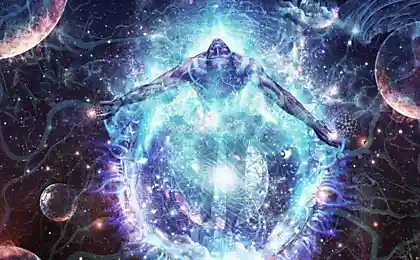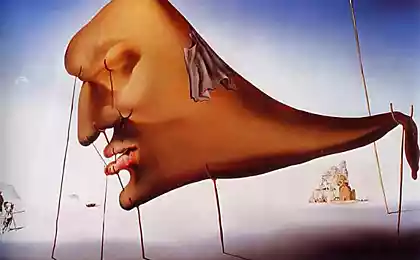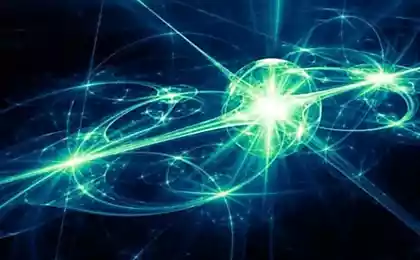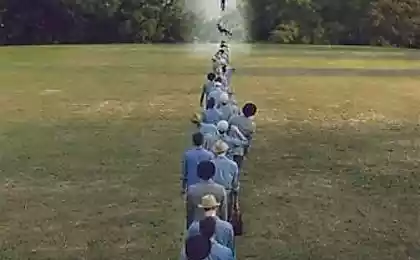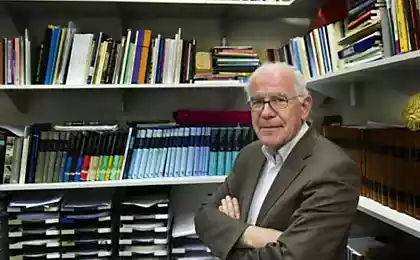477
At Harvard I believe I have found the physical centre of human consciousness

Mapping of the human brain
For many hundreds or even thousands of years, people trying to understand what consciousness is. Where is the "I" of each person? The representatives of the ancient civilizations believed in different ways. Someone said that "I" is in the stomach, someone else claimed that human consciousness resides in the heart or there is in some outer areas (not in the current understanding of the cosmos, not at all). Later this became "suspect" brain. Find out where everything is human consciousness and understand what it means to understand human nature. What is "I" consciousness and the identity of each person — is still an issue. But the area of the brain that are responsible for the fact that the person was conscious, seems to have found.
"We first discovered the connection between the area of the brain stem, which is responsible for wakefulness and fields, which make possible thought process. The puzzle elements are formed into a single unit, indicating that this relationship plays a role in human consciousness," said Michael Fox from the Medical center Beth Israel Deaconess at Harvard medical school.
Researchers previously have demonstrated that during wakefulness meets the brain stem — the part of the brain that works as a bridge between the spinal cord and the brain. This area regulates the activity of humans and animals, responsible for sleep and activity, as well as breathing and heartbeat.
As for the thinking process, awareness itself, has long been considered that only serves the cerebral cortex, some part or all of the bark as a whole. The Harvard scientists suggested that this process involved two distinct area of the cerebral cortex. The system of the brain stem and these two sites, say experts, and is the physical center of human consciousness.
In order to verify this, the team of scientists studied the medical history and the condition of 36 patients with lesions of the brain stem. 12 of the surveyed patients are in a coma, and 24 — awake. The researchers scanned the brain stems of patients in order to understand what area is damaged in those people who are in coma and some of those who are awake.
As it turned out, 10 of the 12 patients, lapsed into a coma, damaged a small area of the brain stem (rostral dorsolateral pontine tegmentum). In 24 of the patients in mind, this area is not damaged. In order to determine what other parts of the brain connected with it, Harvard scientists have carefully studied a map of the brain (connectome) of a healthy person. As it turned out, with the specified part of the trunk is connected to two areas of the cerebral cortex. We are talking about insular lobe (island) and the anterior cingulate cortex.
They then studied images obtained using magnetic resonance imaging (MRI) of the brain 45 patients in a coma in a vegetative state. It is a condition that is characterized by an inability to spontaneous mental activity (decortication) due to the extensive damage to or dysfunction of cerebral hemispheres with preservation activities diencephalic region and brain stem, preserving the autonomic and motor reflexes. It turned out that in all patients the disturbed relation of these lobes of the cerebral cortex with the brain stem.
The authors understand that the results of their work require repeated checks and urge independent teams of researchers to examine their work in order to verify the validity of the findings or refute them.
If the findings hold true, it may help to bring life to patients who are in a vegetative state. "If we're right, maybe one day we'll Wake someone who is in a permanent vegetative state? This is a very important issue," — said the head of research.

Physicists are trying to build a network of active brain centers and also to determine the hierarchy of the network, defining its -
About a week ago on a similar topic was published the work of scientists-physicists from the University of Bar-Ilan in Israel. This team decided to use the theory of networks in order to determine the degree of dependence of the human brain to combine data and conduct conscious activity from the structure of neurons in the cerebral cortex. To do this, scientists scanned using the same MRI gray areas of the cerebral cortex of man. The white matter is also scanned, but with the help of diffusion spectral imaging.
Afterwards, Israeli physicists have decided to use the methodology of network analysis (k-shell decomposition) to determine which leads to consciousness. A common hypothesis about the emergence of consciousness now says that for the emergence of consciousness the brain has to combine different information from different areas of its network. According to Professor Giulio Tononi from the University of Wisconsin, as soon as the amount of combined brain information exceeds a certain limit, then there is consciousness.
Scientists from Israel, plan to study the communication of the entire brain, not just bark. This, in their opinion, will allow to understand how the joint work of neurons lead to the creation of networks and the emergence of consciousness. And the answer to this question, experts hope with the help of physics and mathematics.
Source: geektimes.ru/post/282396/

